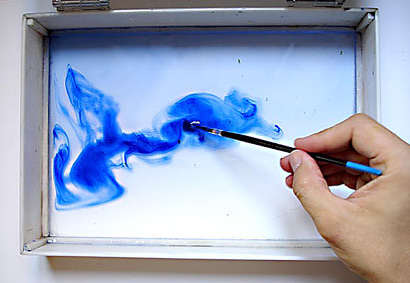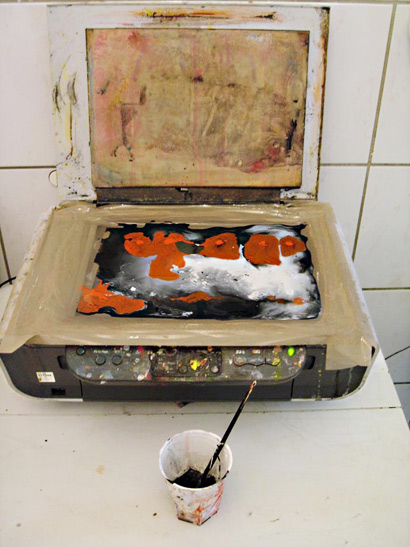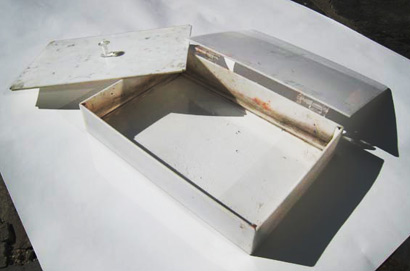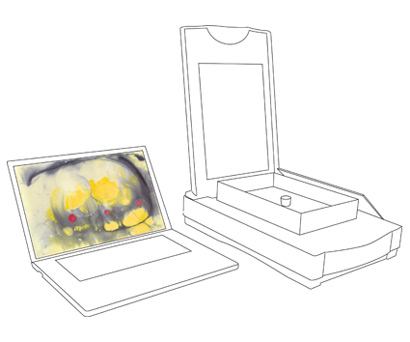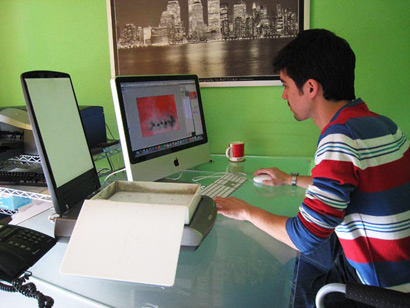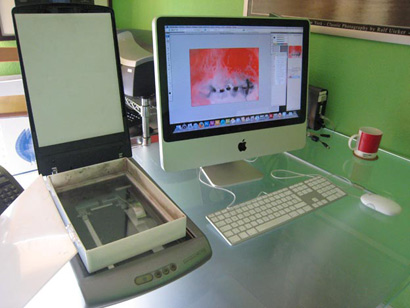
| |
| technic |
| artists |
| links |
| material |
| contact |
| home | bibliography |
Jaime Ruas's technic |
|
I have always been devoted to painting, so when I started working with a flatbed scanner, I tried to merge two technologies (one traditional and one modern), painting and digital technologies, in the most natural way to me. But, even if, apparently they seem very different, I believe we can work with them together. In 2006 I began experimenting with acrylic paints, painting directly on the scanner glass plane. I started putting tape on the sides that connect the scanner glass with the structure of this plastic, but the procedure was unsafe. And a few minutes after I started, the tape protecting the scanner, lost his grip, and liquid began to fall within the structure of the scanner, which was a risk to the proper functioning of the scanner. It was also dangerous, working with liquids on a machine connected to electric current, without a minimum security measures.
However, although conditions were not good and even dangerous, results in these first liquid scans were very satisfactory.
Thus I built a box. A box with transparent background methacrylate, to which I also added methacrylate walls. The planes were joined in the box with a very strong duct tape. It was from then on that I could begin to slowly scann different liquids and different densities. The following explains the physical characteristics of the box, accompanied by drawings for better understanding. Methacry box is placed above the scanner glass, the box has a white cover on which bounces light and allows light background. Inside the box you can put liquids such as water, acrylics, gouaches, oil, etc.. Without spilling any liquid, of course.
This box allows many different techniques to paint in it, without damaging the normal operation of the scanner. The different techniques used in this box are over thirty. Amongst them, you can make collages with damp paper, pencils, watercolors, acrylic paints, wax, adhesive tapes, inks, fabrics, wood, metal, and can paint with brushes, sponges, or even with bare hands, the possibilities of artistic creation is endless.
For a better understanding of the functioning of the box to get scans liquid, you can see some videos at: And the consequences of trying to paint without using a scanner on this box: I sincerely hope that this contribution will help other artists working with the flatbed scanner to dare to use your scanner in a less common way than usual, painting directly onto the glass surface.
|
• Chris Staebler's
layering method >
